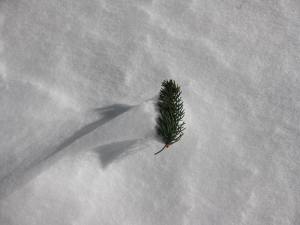I’ve got bones on the brain, a cast on my arm, nothing to do but forensically comb through buried memories of the subject of bones. Winter with broken bones seems apt. Every stark landscape, the bare trees, frost on windows, they all remind me of bones, bones, bones…
Still in Missouri in the early eighties, I was visiting St. Louis with Martin Griffin. He’d quickly pulled the car over in an impoverished neighborhood at a tire shop made of faded black tar paper draped like aging skin over a wooden frame. The outside of the building was encrusted with chrome plated steel discs, made from an array of hub caps from decades of different cars. “Folk art,” Martin said as he left the car with his Nikon around his neck.
When Martin wasn’t back in the few minutes I assumed it would take, I fished out a current copy of The New Yorker from my purse and read a short article before I realized how long I’d been waiting for his return.
When he plopped in the driver’s seat, he reported that the guy who owned the shop came outside. An older African-American in oily overalls, he demanded that Martin get off his property. Martin convinced him that he admired the creative spectacle of his garage and they engaged in a playfully antagonistic conversation that ended with the old man saying, “You know, when you die, your skin is going to turn as black as mine.” And Martin answered, “Yeah, and when you die and there’s no skin left at all, your bones will be as white as mine.”
It wasn’t until I was an adult before I gave the bones much thought. They have little symbolism here but great significance in other cultures. I remember a character from Gabriel Garcia Marquez in One Hundred Years of Solitude, who carries the bones of deceased loved ones around in heavy suitcases. It made such an impact, all these years later, it’s the only thing from the book I recall with any clarity. Travels in Mexico introduced me to Day of the Dead, which is actually three days that begin at midnight on October 31st. Miniature skeletons are on display, for sale all over that colorful country: skeletons cooking, wearing wedding gowns and top hats, dancing, children skeletons playing, sleeping, doing all the same activities of those still going through life in flesh and blood. For The Day of the Dead, an altar is set up for the spirits to visit their loved ones. It’s a festival of communication and celebration of one’s ancestors. In Mexico, the skeleton brings life and death together as one. In the United States, it symbolizes death and is something to fear.
Rather than wait for my mother;s ashes to be delivered, my sister Melanie I drove directly to the crematorium to retrieve them before our flight back to New York. It was a crisp southern Missouri February day. The weight of her life on my lap in the front seat of the car was so real, I had to place her behind me. It didn’t seem right to leave her alone back there, but the dense gallon size cardboard box of ash and crushed bone was more than I could bear. It screamed of a larger than life woman with huge impact on those who crossed her flaming path, and every ounce of the remaining box said ‘This is what’s left of your mother.’ It was considerable, yet dead.
As an avenue to entwining these fragments on the subject of bones, I read that the DNA in the bones is destroyed by cremation. They represent so much more than calcium and marrow that stand and move as a living armature: they contain information, are formed by, and inform the life we lead. Case in point: The Cheddar Man, a 9,000 year old skeleton discovered in a cave in 1903 in southern England, and it turns out his DNA was perfectly intact. Ninety years later, researchers analyzed a tooth from his head and found a maternal strain that matched a living school teacher in the area. They weren’t exactly a tribe of nomads.
Blithely making it through a tomboy-tree-climbing-childhood without breaking any bones, I remember twinges of jealousy when a peer came to school in a cast. It was a badge of honor. And all the sympathy and signatures that came with the condition… Fortunately, that was then and this is now and now demands consideration.
Turning to Revelations for a New Millennium by Andrew Ramer for enlightenment, there is a chapter on the symbol of the major bones of the body. The arms represent expression of creativity and intention. The ulna is the Creative Measure bone and the radial is the bone of Creative Expression. As I type one handed, both those bones are in the miraculous process of mending while I dig deep to make sense out of a fall on the ice on an upstate country road. I’m getting there, forming theories as I do all the things to encourage cellular growth: energy work, imaging straight, elegant, lovely bones that serve the rest of my precious life and times.




